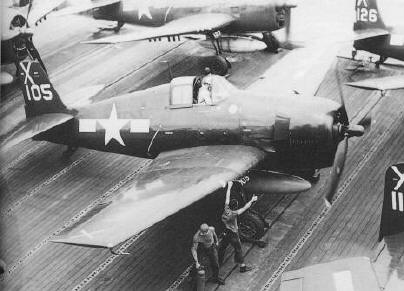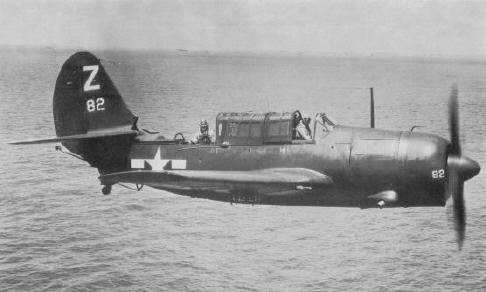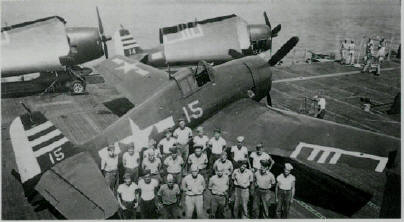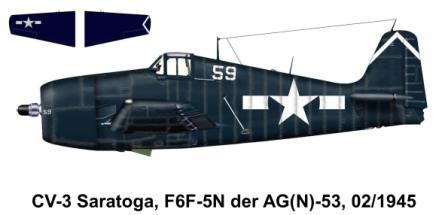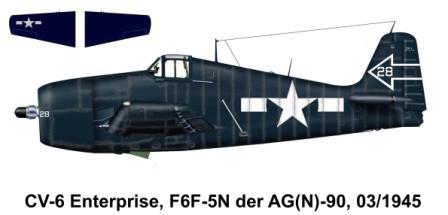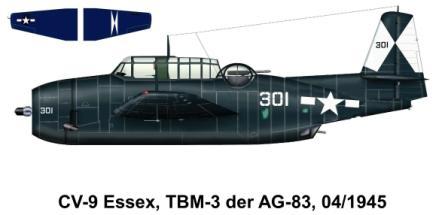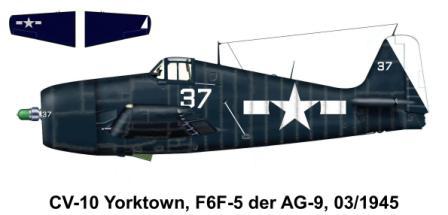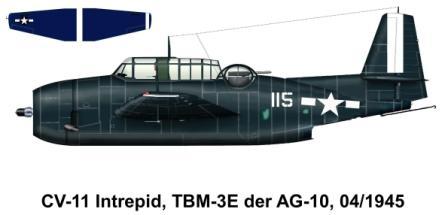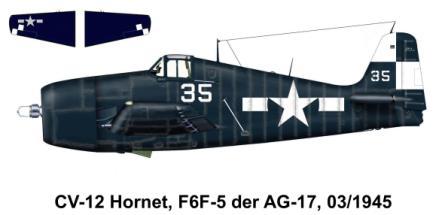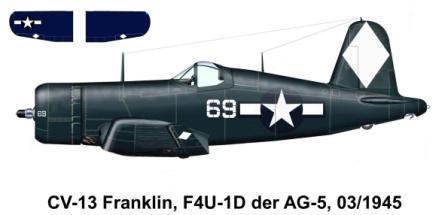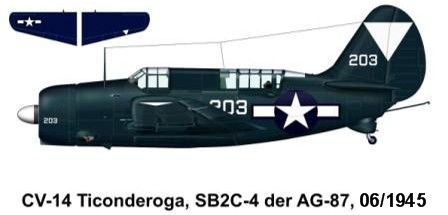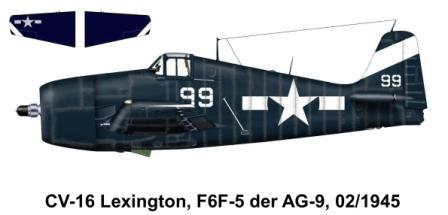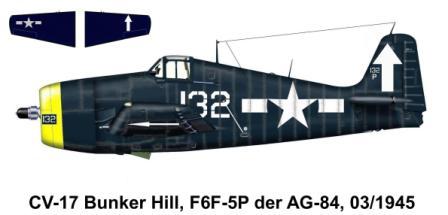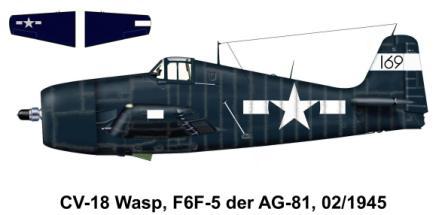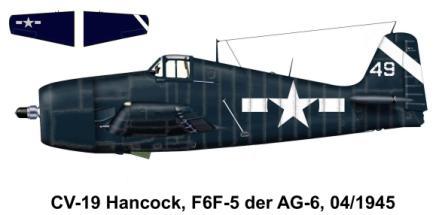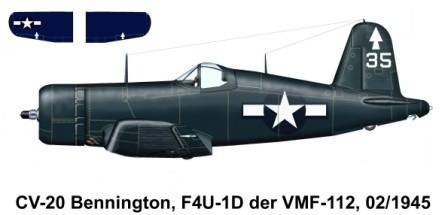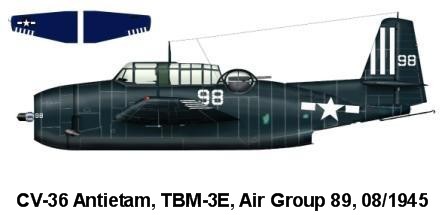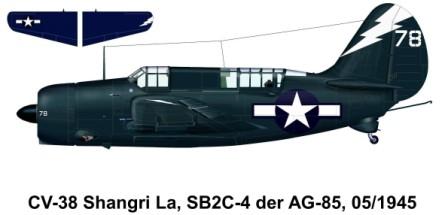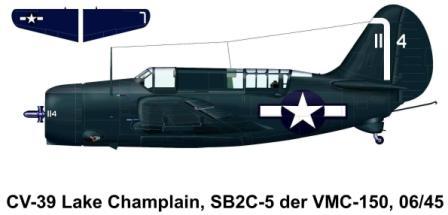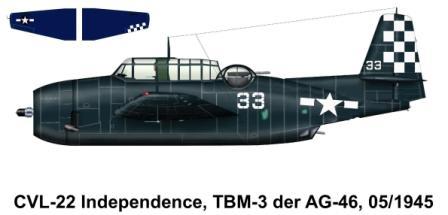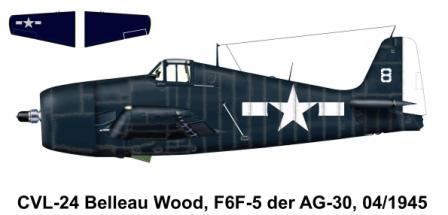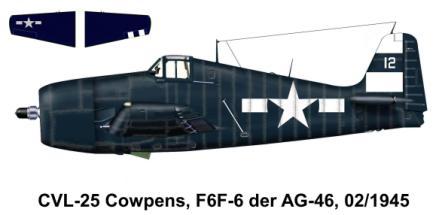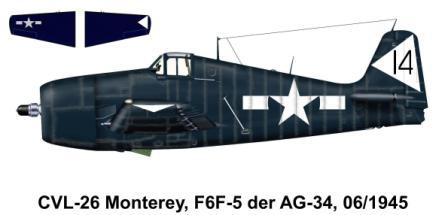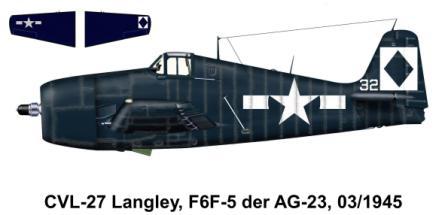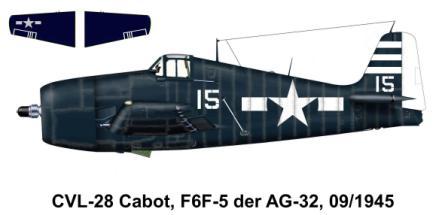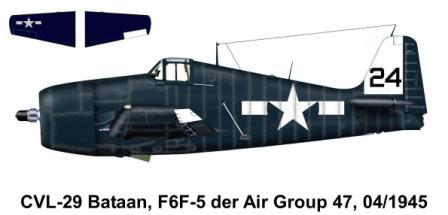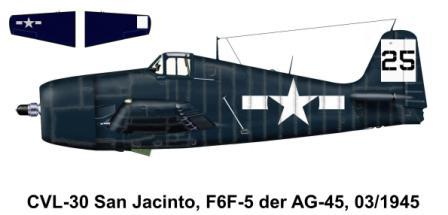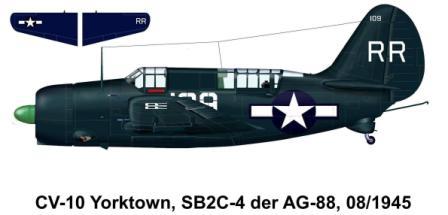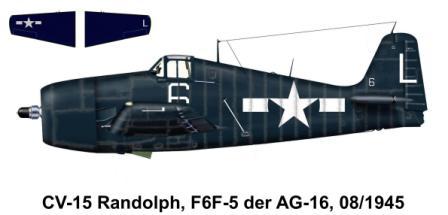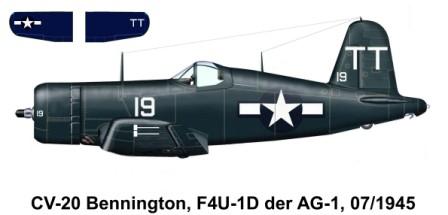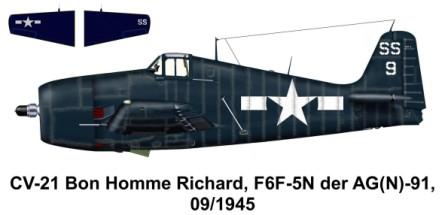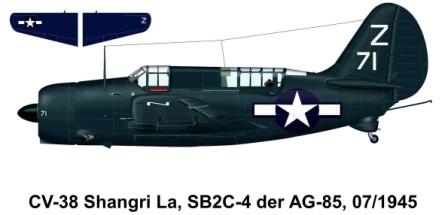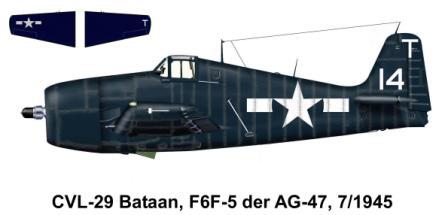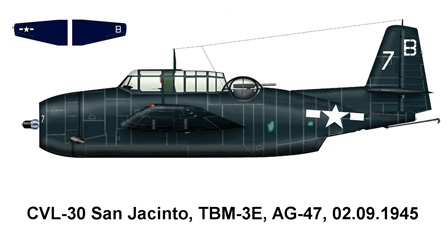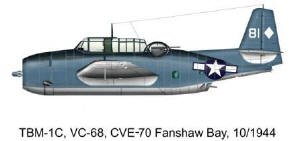Markings of US Navy Carrier
Aircraft
Part III - 1945
In the beginning of 1945 the
Philippines were liberated, new carrier Task Forces were formed. On the way to
Tokyo the islands of Iwo Jima and Okinawa had to be taken. As more carriers and
aircraft than ever before were to participate a new aircraft identification system
deemed necessary.
To standardise the system of
tailmarkings, with Confidential Letter No. 2CTL-45, FF 12-5/F39-2/Ro, dated
January 27, 1945, the Bureau of Aeronautics (BuAer) issued a list of markings
for aircraft of all fleet and light carriers within Task Force 38 (rotation of TF 58). The
new markings - geometric again - were now to identify the carrier itself (previously aircraft
tail markings were inventions of individual squadrons). Also new was the repetition of the assigned marking on the
upper side of the right wing
(see Profiles
below).
|
|
|
SB2C-4 of CV-9 Essex on
the way to Hokodate |
|
Plus and Minus of the new system were equally
obvious. Now all aircraft of the assigned air group - which contained
several squadrons - had an identical tail marking whereas previously
differences were possible.
On the other side there was no way to
identify a certain squadron exept for the numbers applied. In example CV-17
Bunker Hill (marking: vertical arrow): A F4U-1D Corsair with a yellow ring
around the front of the cowling is often described as member of VF-84, but
in reality it could also be from VMF-221 or VMF-251 as well, because CV-17 had three
Corsair squadrons on board (the same goes for CV-9 Essex, Navy VF-squadron
plus Marines VMF-124, -451, and
CV-18 Wasp, VMF-216, 217).
The only clue to identification of a certain
squadron was its numbering system. It became common to assign each squadron
a certain block of numers (i.e. fighters 100 and following, torpedo planes
200 ff. dive bombers 300 ff), but not always and not clearly defined for all
carriers.
|
| |
|
|
|
|
As CV-6 "Enterprise" was
on night duty all markings of VT(N)-90
were in gray colour |
|
Night fighter units weren't too happy with
the new markings. Too conspicuous and therefore not practical in night
warfare. ComAirPac - authorized to assign different markings - was quickly convinced and permission for alteration
granted, also for CV-6 Enterprise though day time carrier.
On some carriers the new marking was
adhered to, but modified in another way (application on the underside of the
left
wing too or on both wings).
The profiles below show the actual
ones used.
|
July 27, 1945 - now Task Force 58 again -
brought another, final, change.
ComAirPac McCain was the opinion that
geometric designs were fine to look at, but difficult to describe in radio
messages. Use of letters seemed much more practical. To be applied on the
vertical tail and the upper side of the right and the lower on the left
wing
(Profiles II).
Size 24'', in August changed to 36'' for single letters and 30'' for double
ones.
Though
this list contained markings for all carriers nominally assigned to TF 58,
they weren't actually applied everywhere. The newest carriers weren't
battle ready yet, some others in overhaul or severely damaged. But also
those in action didn't display utterly haste. The table below shows
wich ones were actually used.
By the
way: The letter code is still in use today, albeit with different letters ("Ax"
for a/c of the Atlantic fleet, "Nx" for the Pacific fleet).
|
|
|
|
|
Start sequence on CV-18 Wasp, in the middle 5th aircraft of VF-86. |
|
SB2C-4
Helldiver from CV-38 Shangri La (Air Group 85) at the end of the war |
|
|
|
|
|
|
|
Hellcats of VF-32 on
board CVL-28 Cabot in Sept. 1945, against directive still with geometric marking. |
|
|
|
Letter Code actually applied: |
|
CV-9 Essex |
F |
|
CV-10 Yorktown |
RR |
|
CV-14 Ticonderoga: |
V |
|
CV-15 Randolph: |
L |
|
CV-16 Lexington |
H |
|
CV-18 Wasp: |
X |
|
CV-19 Hancock: |
U |
|
CV-20 Bennington: |
TT |
|
CV-31 Bon Homme Richard |
SS |
|
CV-38 Shangri La |
Z |
|
CVL-22 Independence: |
D |
|
CVL-24 Belleau Wood: |
P |
|
CVL-25 Cowpens: |
A |
|
CVL-26 Monterey: |
C |
|
CVL-29 Bataan: |
T |
|
CVL-30 San Jacinto: |
B |
|
|
Other Markings:
As before. For attacks on Kyushu (homeland Japan) in spring
1945 a white or yellow ring around the front of the cowling was applied in
washable paint.
Profiles:
All profiles below (Copyright) were made according to photos
of the original aircraft. Markings not shown were
used by Escort Carrier (CVE) aircraft,
see CVE page.
Concerning the letter code not all aircraft
are shown as the difference was only in type of aircraft, not in the marking
itself.
Captions: Carriers in alphabetical order, Type of aircraft, unit, representative date.
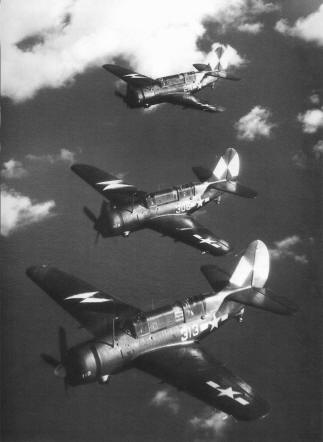
-90.jpg)
